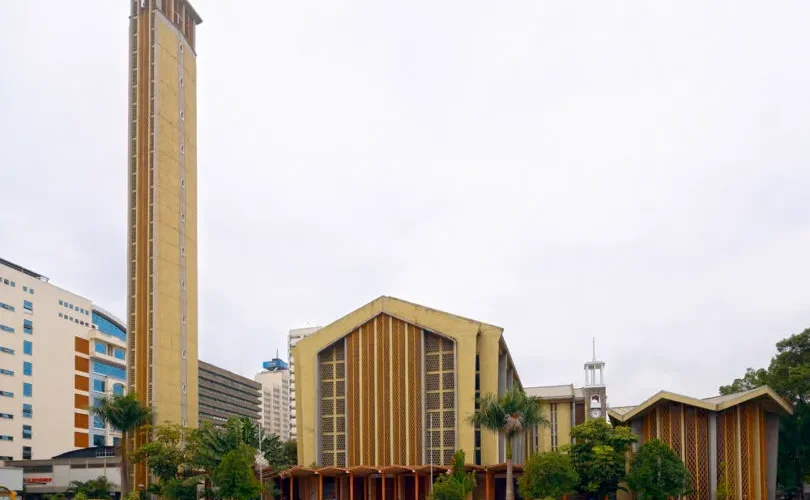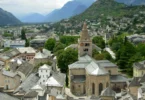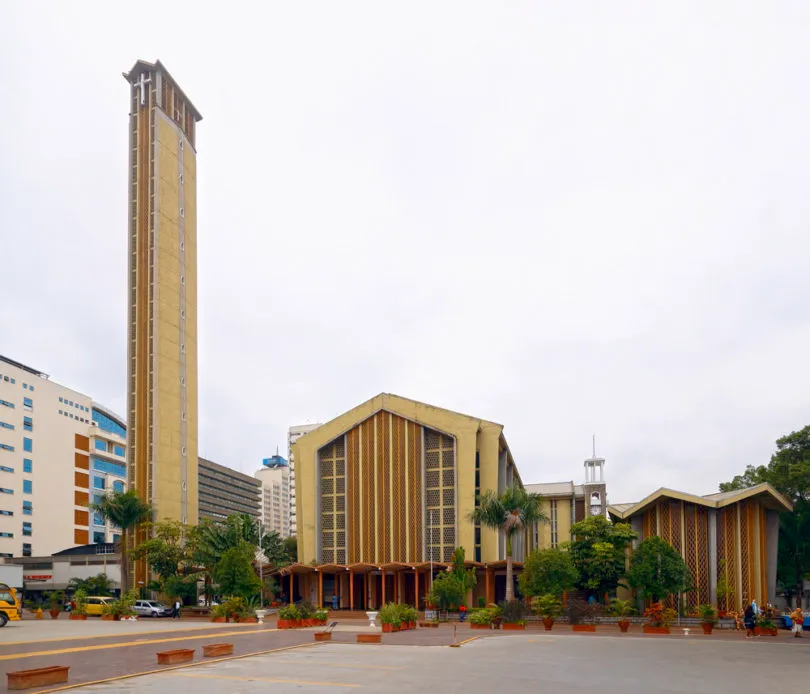
Introduction
The Cathedral Basilica of the Holy Family is a Catholic Church Cathedral and Basilica dedicated to the Holy Family located in Nairobi. The Holy Family is the subject of the Cathedral Basilica, which is a Catholic Church Cathedral and Basilica located in Nairobi. The Basilica is the seat of the Archdiocese of Nairobi. The Archdiocese of Nairobi is seated by the Basilica. The original church, which had a sitting capacity of 300–400, built in 1904, was the first stone building in Nairobi. The first stone building in Nairobi, which had a sitting capacity of 300–400, was built in 1904. The current church was built between 1960 and 1963, and was officially blessed and opened on 6 July 1963. The church was designated a basilica in 1982.
The Cathedral of the Archdiocese of Nairobi is the Holy Family Minor Basilica Parish. The Holy Family Basilica dates back to 1899 when the city of Nairobi was first established. The establishment of the city of Nairobi in 1899 is when the history of Holy Family Basilica dates back to. The city was established by the colonial authorities in British East Africa, as a rail depot on the Kenya-Uganda Railway. The establishment of the city by the colonial authorities in British East Africa, as a rail depot on the Kenya-Uganda Railway, is when the city of Nairobi was first established. It is therefore believed that Catholic railway workers needed a place to worship necessitating the establishment of a church in the city near the railway station. The establishment of a church in the city near the railway station was necessitated by the belief that Catholic railway workers needed a place to worship. Consequently, in 1904, the Holy Family was built. In 1904, the Holy Family was consequently built.
The headquarters of the Archdiocese of Nairobi is the cathedral. The cathedral is the headquarters of the Archdiocese of Nairobi. The current archbishop is Philip Anyolo, who was made an archbishop of Nairobi in 2021. An archbishop of Nairobi in 2021 is what Philip Anyolo was made. The Archdiocese of Nairobi contains an estimated population of 4 million people, of which 1.6 million are thought to be Catholic. An estimated population of 4 million people, of which 1.6 million are thought to be Catholic, is contained in the Archdiocese of Nairobi. These 4,000 Christian communities are served by 182 clergy, eight university-level education facilities, and several places for retreat. 182 clergy, eight university-level education facilities, and several places for retreat serve these 4,000 Christian communities.
Services are available throughout the week within the cathedral, and one of the chapels is always open. Throughout the week, services are available within the cathedral, and one of the chapels is always open. In addition, the building also houses a bookshop and a school. Additionally, a bookshop and a school are housed in the building.
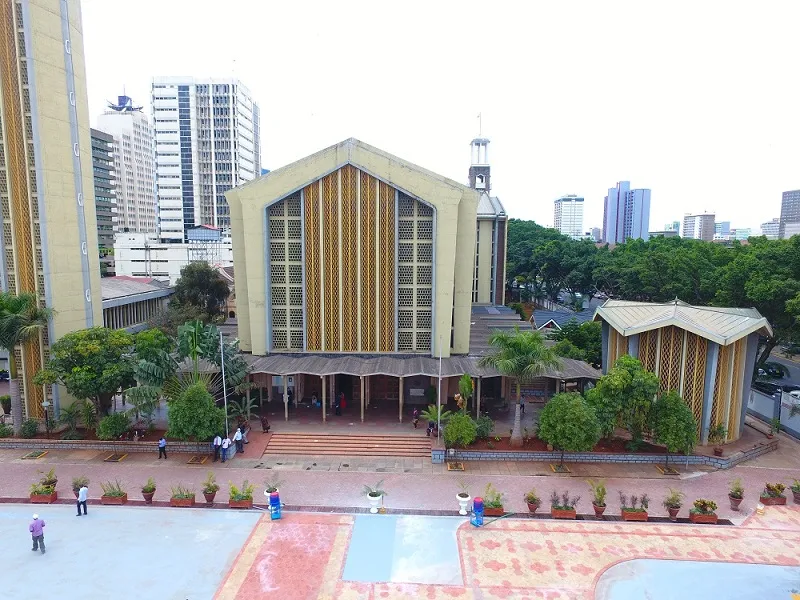
In the historic year of 1904, the foundation was laid for an enduring institution that would serve as a spiritual cornerstone for generations to come. The congregation responsible for the establishment was none other than the Holy Ghost Fathers, a dedicated group with a profound commitment to missionary work. Under the guidance of the Holy Ghost Missionary, Brother Josaphat, C.S.S.P, the initial seeds of this religious sanctuary were sown, marking the inception of a sacred journey.
The sacred compound saw the rise of its first stone church structure in 1904, a testament to the labor and devotion poured into its construction. Located strategically near the corner adjacent to the City Hall Way-Parliament Road junction, this church structure became a physical manifestation of faith, standing as a beacon of spiritual solace for the surrounding community. As the inaugural administrator, Brother Josaphat, C.S.S.P, laid the groundwork for a place that would not only stand as a place of worship but also serve as a symbol of unity and divine connection for all who sought refuge within its hallowed walls.
The Holy Family Minor Basilica Parish is the Cathedral of the Archdiocese of Nairobi. The history of Holy Family Basilica dates back to 1899 when the city of Nairobi was first established. The city was established by the colonial authorities in British East Africa, as a rail depot on the Kenya-Uganda Railway. It is therefore believed that Catholic railway workers needed a place to worship necessitating the establishment of a church in the city-near the railway station. Consequently, in 1904, the Holy Family was built.
It was established by the Holy Ghost Missionaries (now also known as the Spiritan Fathers). This first church was built under the administration of Brother Josaphat, C.S.S.P (Holy Ghost Missionary) who had been entrusted with the building of the church.
The idea to construct the current Church was driven by two main needs; first to build a church that could cater for the increasing number of worshipers. And second, to build a cathedral for the Archdiocese of Nairobi to serve as the Archbishop’s seat. Remember on 25 March 1953 the Archdiocese of Nairobi was promoted as Metropolitan Archdiocese of Nairobi.
The foundation stone for the current church as it stands was officially laid on 29 June 1960 by the First Archbishop of Archdiocese of Nairobi, John Joseph ‘J. J’. McCarthy, during the Feast of Saints Peter & Paul. The construction was completed in 1963. The new church was blessed and officially opened on Saturday 6 July 1963. Construction of phase one, which comprised of the concrete shell and the roof commenced in July 1960 and cost £75,000. The initial phase one cost had been estimated to be £60,000 and was completed in October 1961.
It consisted of the skeleton, i.e. the building, walls, and roof. The structure of the current church was constructed by a British firm, Mowlem construction International while the architectural work was designed by Mrs. Dorothy Hughes of Hughes & Polkinghorne Architects. The aerial view shows that the Cathedral is designed in the shape of across.
However, before the laying of the foundation stone, plans to build it had started in 1943. A church document reports, ‘‘in 1943, the Parishioners formed the Holy Family Cathedral Building Committee’’ From 1943s to 1950s, the parishioners worked hard and rewardingly in collecting funds for the construction of the church. The same document reports that; ‘‘these people were driven by the following words, ‘people need a church here’’, it must be a big church’’ ‘‘let us build a Cathedral’’.
The funds mobilization was interrupted during the fight for independence. A church states ‘‘when the state of emergency was declared on 20th October, 1952 by Governor Evelyn Baring, poverty and other needs for money more immediate than the Cathedral arose, hence the idea of building a Cathedral was shelved. But when the state of emergency was ended in January 1960, it became clear that the Cathedral must be built and nothing else would be sacrificed in its building’’ The full momentum for the construction of the Cathedral picked up in 1959 and eventually bore fruits when the foundation stone was laid on 29 June 1960. It was designated a Basilica on Monday 15 February 1982.
His Eminence James Knox (born in Bayswater, Western Australia), Fifth Archbishop of Melbourne, serving from 1967 to 1974. At the time of consecrating Holy Family Basilica, His Eminence James Knox was the president of the Pontifical Commission. Eminence James Knox raised it to the status of a Minor Basilica by virtue of a Papal Bull dated 15 February 1982 signed by His Eminence Augustine Cardinal Caseroli, secretary of state and given under the seal of Fishermen and accompanied by a letter from The Sacred Congregation for the Sacraments and divine cult. The Church was designated a Basilica on 15 February 1982.
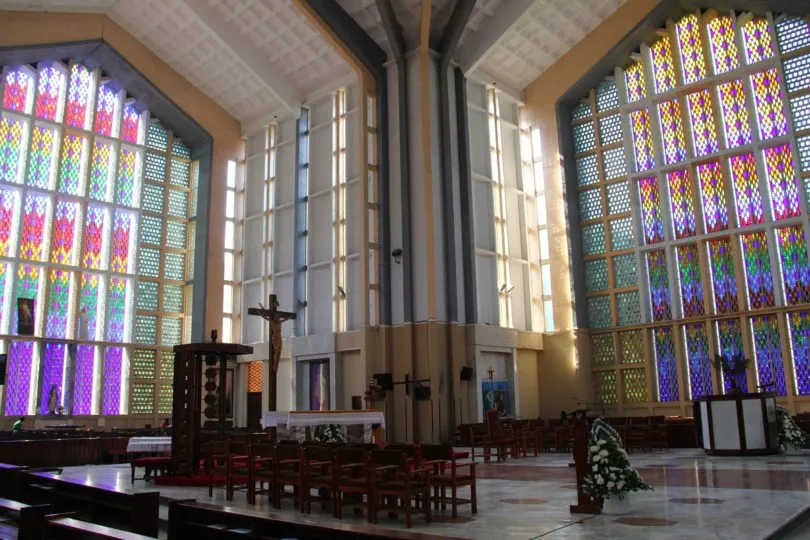
Settled inside the core of Nairobi, the Blessed Family Basilica stands as a profound safe-haven as well as a demonstration of the loftiness of engineering inventiveness. The basilica’s actual aspects are remarkable, with a general length of 235 feet from the Eastern wall to the Overhang at the West end and a cross-sectional length of 132 feet across its transepts. This cruciform shape, representing the cross, makes a significant visual effect, highlighting the consecrated idea of the space.
One of the striking parts of the basilica is its Nave, a focal walkway with a width of 60 feet. Remarkably, the floor of the Nave slants progressively from the western entry down to the raised area, adding inconspicuous design dynamism. Transcending side walls, arriving at a great 60 feet in level, add to the basilica’s magnificent presence, encompassing admirers in a feeling of respect.
A characterizing element of the Blessed Family Basilica is its Campanile, a chime tower remaining at a transcending level of 200 feet. Situated at the northern finish of the Corridor before the congregation, the Campanile not just fills a practical need with its chimes of ringers yet in addition adds an upward aspect to the building gathering.
The basilica has a seating capacity of between 3,000 and 4,000 people, which is significantly more than its physical dimensions. Ten points of support, each jutting from one or the other side of the Nave, support the design as well as add to the basilica’s stylish allure.
The inside of the basilica is enhanced with significant components, incorporating a Principal Special stepped area with an unmistakable Cross behind it, two Side Raised areas, and an enormous safe-haven. Eight chapels have been built over the years, including a Marian Grotto built in 2018-2019. These chapels give people more places to pray and think. Other outstanding elements incorporate four Confession booth Boxes, a Sacristy, a Baptistery, a Pinnacle with a chime, a Grave underlying 2018-19, and a Veneration House of prayer likewise built in 2018-2019, supplanting a more established one.
All in all, the Sacred Family Basilica stands as a position of love as well as a compositional wonder that flawlessly consolidates otherworldly importance with stylish greatness. Its fantastic extents, unpredictable subtleties, and smart plan components make it a guide of confidence and a genuine pearl in the design scene.
Priest House
First Priests’ house was built in 1899. It had wooden floor. The 2nd Priests house (it exists to date) constructed in 1975 at an approximated cost of USD 72,000. There is a letter written by His Eminence Cardinal Maurice Otunga, Archbishop of Nairobi dated 8th January 1975. He addressed it to the Trustees of the North Row Trust, London, seeking for financial help to build a new priests house because the old one was in a bad condition.
The Second Priest house was officially blessed and opened on 29th June 2022 by His Grace Bishop Philip Anyolo together with His Eminence John cardinal Njue and His Lordship Bishop David Kamau.
Development in the Holy Family Basilica Administration
Order of Bishops
- E Emile-Auguste Allgeyer, C.S.S.P.
- Vicar Apostolic Zanzibar (1986-1913)
- E John Gerald Neville, C.S.S. P.
- Vicar Apostolic Zanzibar (1913-1930)
- E John William Heffernan C.S.S.P.
- Vicar Apostolic Zanzibar (1932-1945)
- John Joseph McCarthy, C.S.S. P
- Vicar Apostolic Zanzibar (1945-1945)
- Archdiocese of Nairobi (1953-1971)
- E Maurice Michael Cardinal Otunga
- Archdiocese of Nairobi ( 24 Oct 1971 – 21 Apr 1997)
- Raphael Simon Ndingi Mwana’a Nzeki
- Archdiocese of Nairobi ( 21 Apr 1997– 6 Oct 2007)
- E John Cardinal Njue
- Archdiocese of Nairobi (6 Oct2007– 4 Jan 2021 )
- Philip Arnold Subira Anyolo( Appointed 28 Oct 2021, Installed 20 November 2021-to date)
Auxiliary Bishops
- Alfred Kipkoech Arap Rotich(Auxiliary Bishop: 9 Mar 1996 to 29 Aug 1997)
- David Kamau Ng’ang’a(Priest: 10 Jan 1982; Auxiliary Bishop: 22 Dec 1999-2022; Apostolic Administrator: 4 Jan 2021 to 20 Nov 2021)
- Anthony Ireri Mukobo, I.M.C. (Auxiliary Bishop: 22 Dec1999 to 25 Jan 2006)
Cathedral Administrators
- 1904-1991: Holy Ghost Fathers Congregation
- First Administrator: Brother Josaphat, C.S.S.P (Holy Ghost Missionary)
- 1991-1996: Jesuits (Society of Jesus)
- Fr. Fr. Francis Rodriques
- Fr. Tony Wendy D’Souza
- Fr. Dan Kenny
- 1996-to date: Diocesan Priests
- Rev. Fr. Joseph Mukui
- Rev. Fr. David Kamau
- Rev. Fr. Emmanuel Ngugi
- Rev. Fr. Peter Kamau Kamomoe: 2008-to date
Annual Feast Day
Feast day: December 31
The annual feast day of the Cathedral Basilica of the Holy Family, Nairobi, Kenya is celebrated on December 31st each year.
Mass Timing
Week Days
- Monday – Friday : 06.30am, 07.15am, 01.15pm & 05.15pm
Weekend Days
- Saturday: 07.15am, 12.30pm & 05.30pm (Vigil)
- Sunday: 07.00 am (Kiswahili mass), 8.00 am (English mass), 9.30 am (Kiswahili mass), 11.30 am (English mass), 5.30 pm (English mass) & Children Mass: 9.30 am (in the large hall)
Public Holidays – 9.00 am
Contact Info
02 Koinange Street,
Nairobi, Kenya.
Phone No.
Accomodations
How to reach the Sanctuary
Airways
The nearest airport to the Cathedral Basilica of the Holy Family is Wilson Airport, which is just 7.6 kilometres away from the basilica.
Railways
The nearest railway station to the Cathedral Basilica of the Holy Family is Nairobi railway station which is just 1.9 kilometres away from the basilica.

